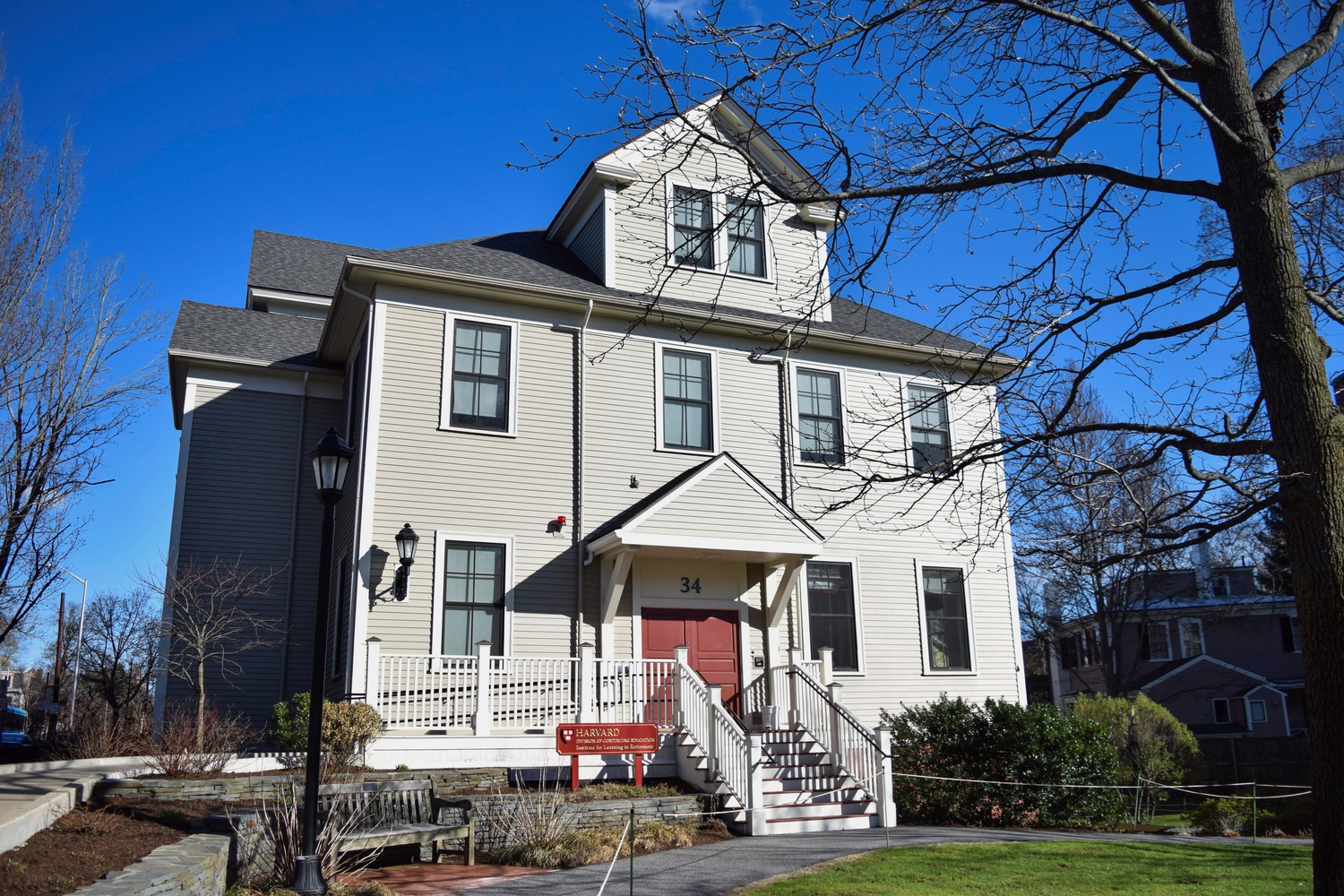
News
Summers Will Not Finish Semester of Teaching as Harvard Investigates Epstein Ties

News
Harvard College Students Report Favoring Divestment from Israel in HUA Survey

News
‘He Should Resign’: Harvard Undergrads Take Hard Line Against Summers Over Epstein Scandal

News
Harvard To Launch New Investigation Into Epstein’s Ties to Summers, Other University Affiliates

News
Harvard Students To Vote on Divestment From Israel in Inaugural HUA Election Survey
Harvard Institute for Learning in Retirement Revises Membership Policies

Harvard’s Institute for Learning in Retirement, a program that provides continuing education opportunities to retired seniors, revised its membership renewal process and committed to decreasing its use of University subsidies last month.
The program, which runs out of the Division of Continuing Education, comprises approximately 550 retired or semi-retired professionals who worked in various industries, including education, architecture, and government.
The changes — outlined in HILR’s revised handbook — aim to open more spots for new participants in the program annually and make current participants more aware of the policies of the program, according to HILR director Tess O’Toole ’84.
O’Toole said HILR codified the membership renewal process to both help participants reassess their fit with the program’s needs and encourage opening spaces up for new enrollees. HILR targets 10 percent new participants annually, according to the handbook.
The new handbook specifies that HILR “seeks a diverse group of retired or semi-retired learners committed to rigorous liberal arts study on the peer-learning model.” Participants in the program lead courses and take part in extracurricular activities and guest lectures.
Former HILR Director Leonie J. Gordon, who currently participates in the program, said participants used to have informal check-ins to assess and reflect on their progress in the program.
The new handbook formalizes these discussions and outlines fixed participation periods in the program, the first of which lasts three years. At the conclusion of each participation period, participants must now submit requests for renewal that require them to describe their experience and how they “envisage” their next stage at HILR, according to the handbook.
O’Toole added that the rigor of the program sometimes causes participates to decide that HILR is “more of a commitment” than they might have been prepared to make.
The Division of Continuing Education has also set a target for the program to reduce annual subsidy need from the division from $350,000 to $200,000, according to the handbook.
HILR funding comes from three main sources: a program fee paid by participants, HILR-specific endowment funds established by past donors, and the proceeds of HILR’s Annual Appeal. Tuition revenue covers 66 percent of expenses and the endowment and gift funds cover 34 percent of the expenses of the program. These numbers exclude the annual subsidy, according to the handbook.
O’Toole said that the reduction in subsidies does not amount to a budget cut.
“We have the same budget that we've always had,” O’Toole said.
She added that though HILR has not made any decisions on revenue generating strategies yet, there are “various entryways” to make up for the loss in subsidies that potentially include more fundraising and increasing tuition.
“We haven't had a tuition increase in a long time. At some point, there might have to be a tuition increase… I haven't set out with the community at this point what combination or what calibration of tuition versus development versus additional revenue through programs that happen here,” O’Toole said.
HILR Teaching and Learning Committee Co-Chair Judy P. Uhl, a long-time participant in the program, said HILR is “sort of due for a tuition increase.”
“My guess is that what HILR is going to do is increase the tuition, which with or without this new handbook, people were sort of expecting,” Uhl said.
O’Toole added that there are many participants in the program who are interested in its development in terms of other programs that can help generate revenue.
O’Toole also said the revisions to the handbook offer an opportunity for “everyone [in HILR] to get on the same page,” especially as participants are asked to sign a form that confirms they familiarized themselves with the handbook and understood the structure of the program.
Uhl said HILR always had a handbook, but that very few participants read it.
“You could operate on the basis of ‘whatever used to happen, happens.’ So what Harvard decided to do was to get this handbook that established, ‘What is this place? So, we have a handbook now,’” Uhl said.
—Staff writer Lucy Liu can be reached at lucy.liu@thecrimson.com.
Want to keep up with breaking news? Subscribe to our email newsletter.
